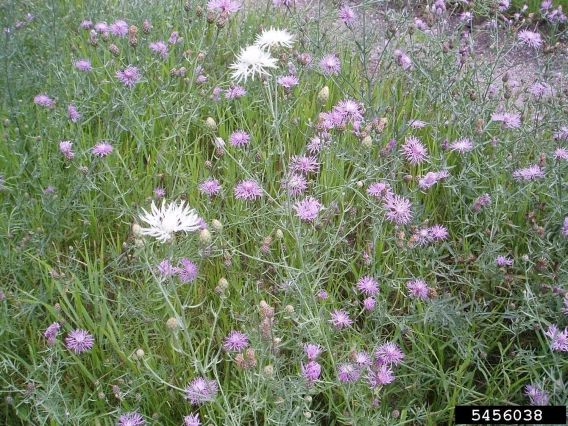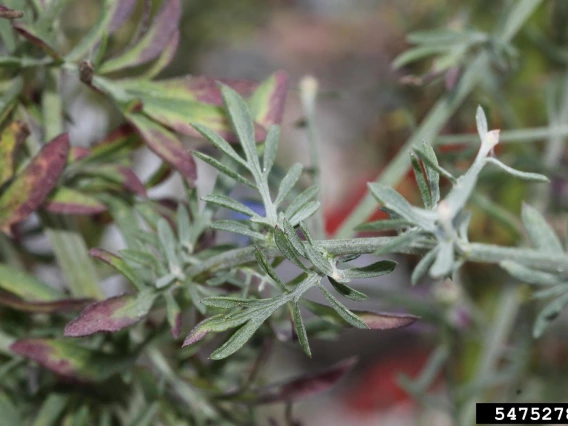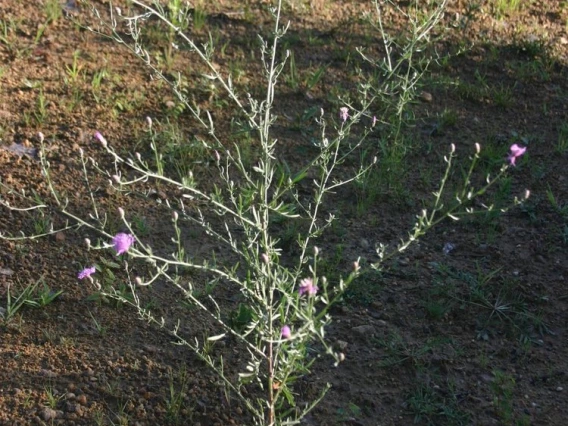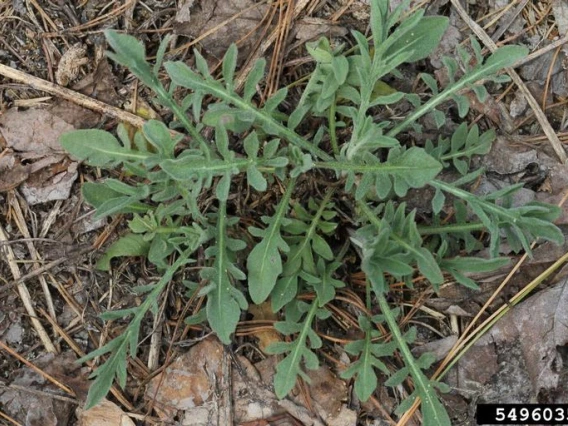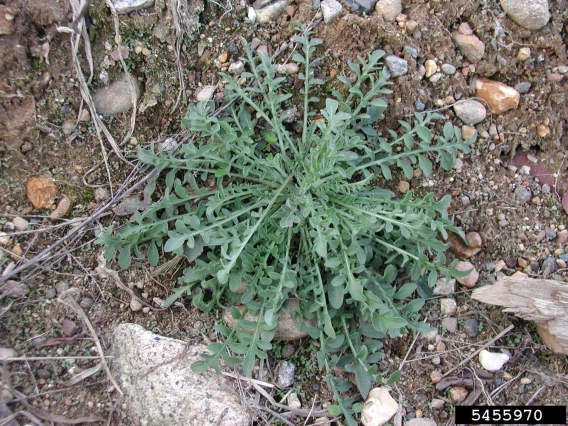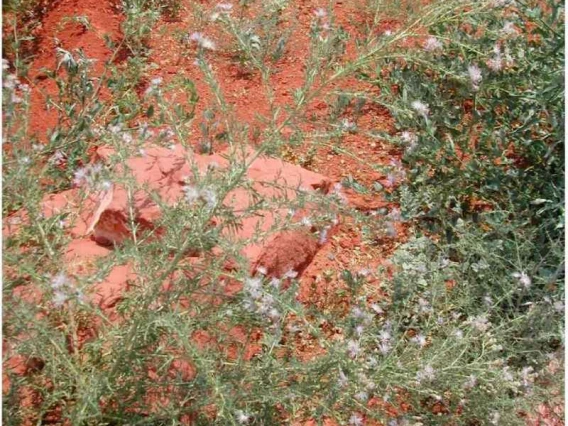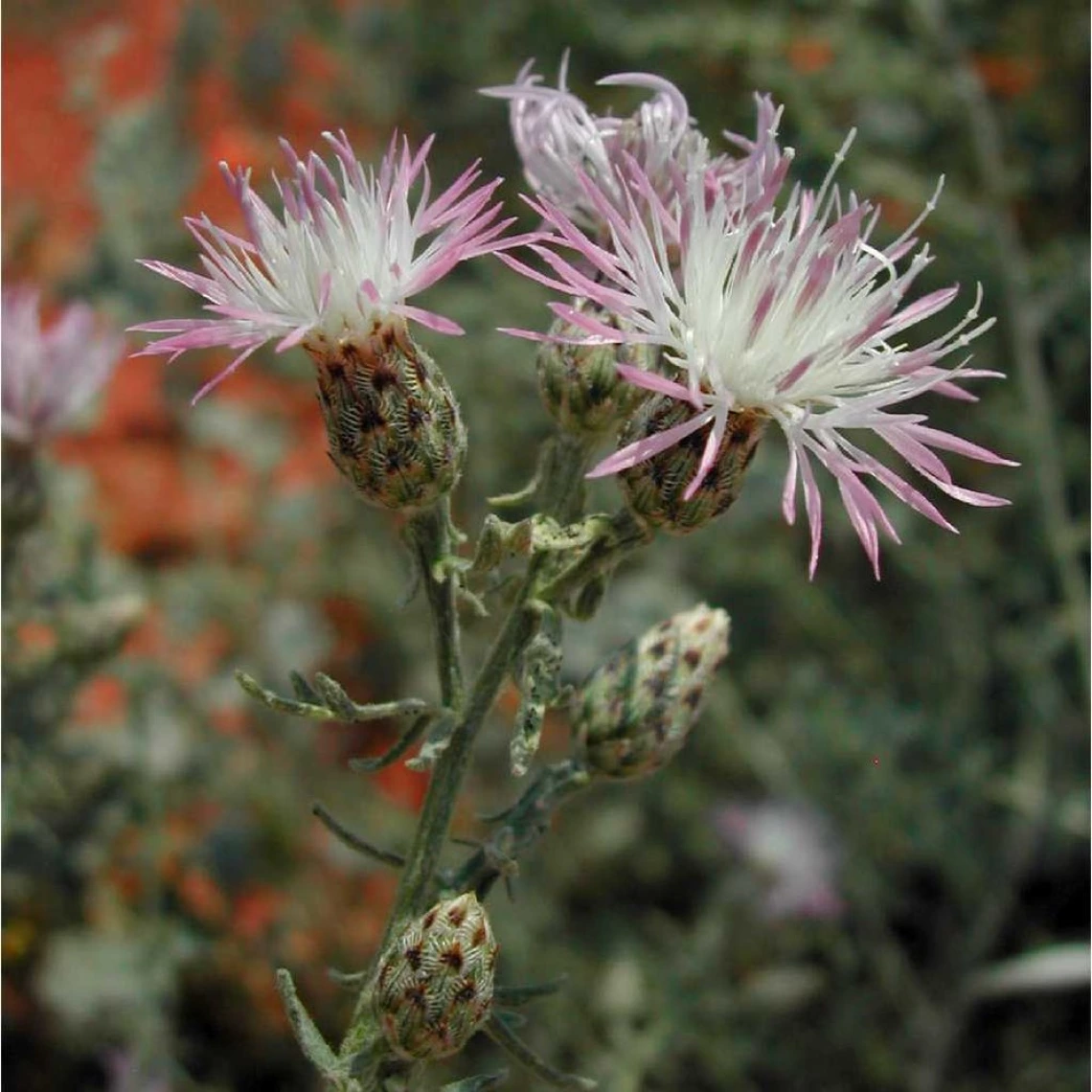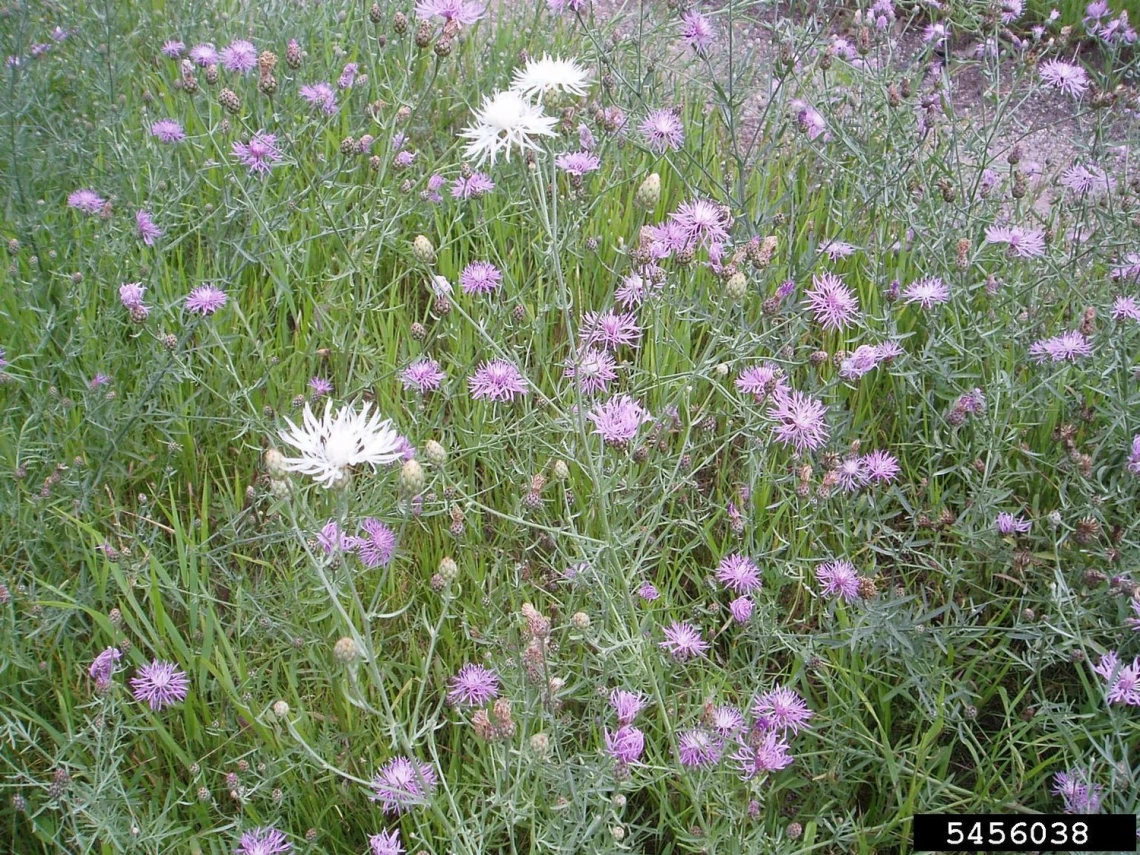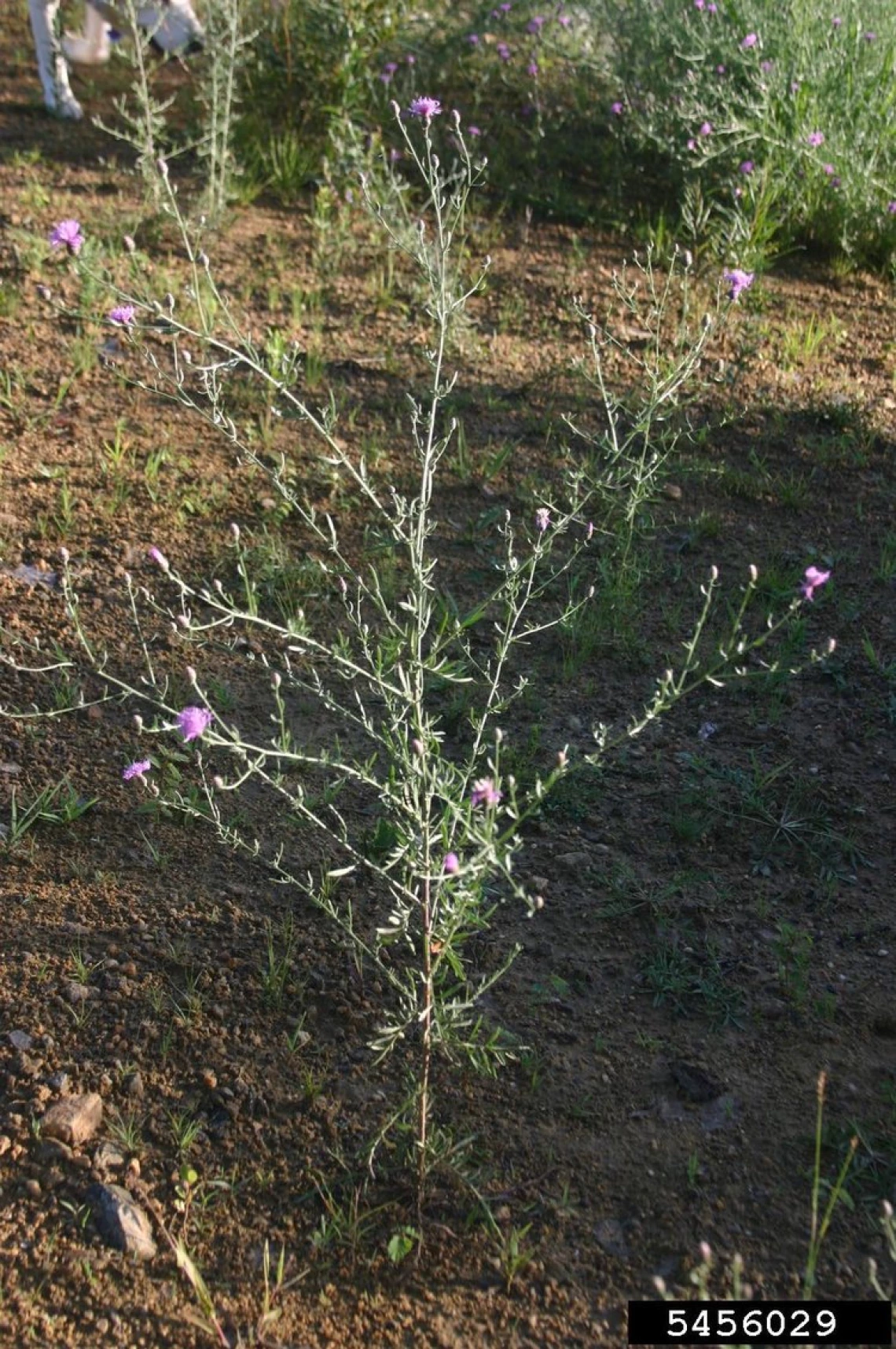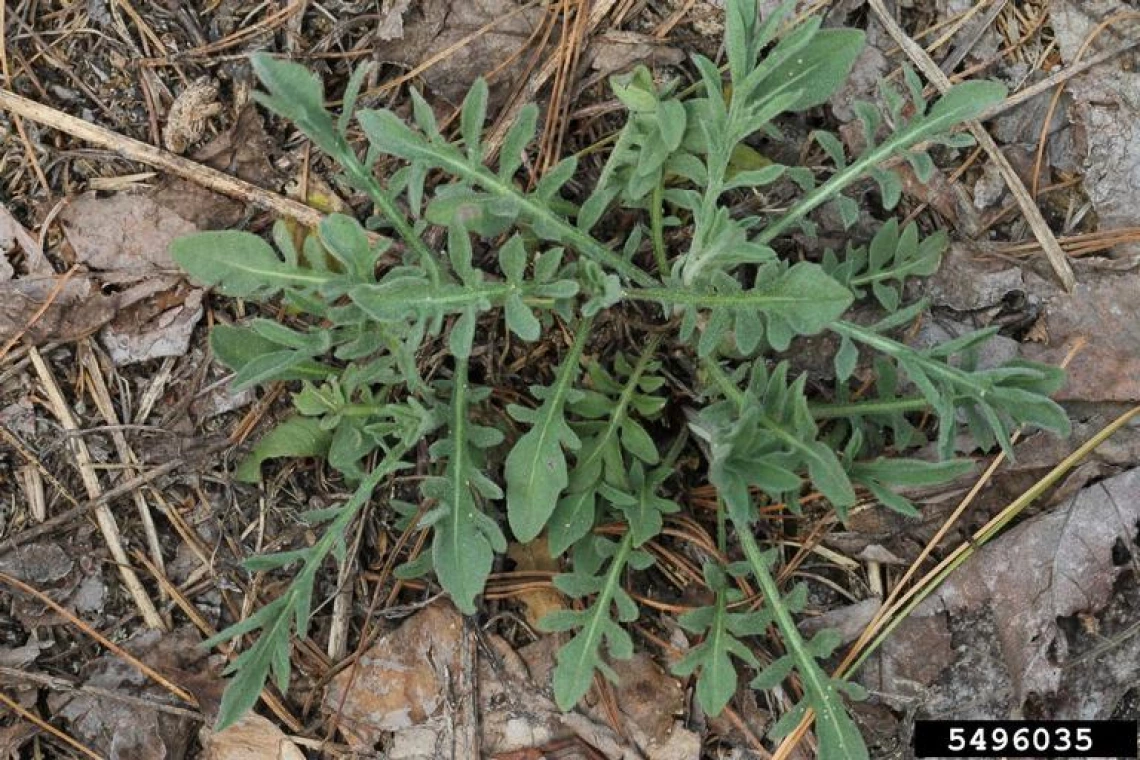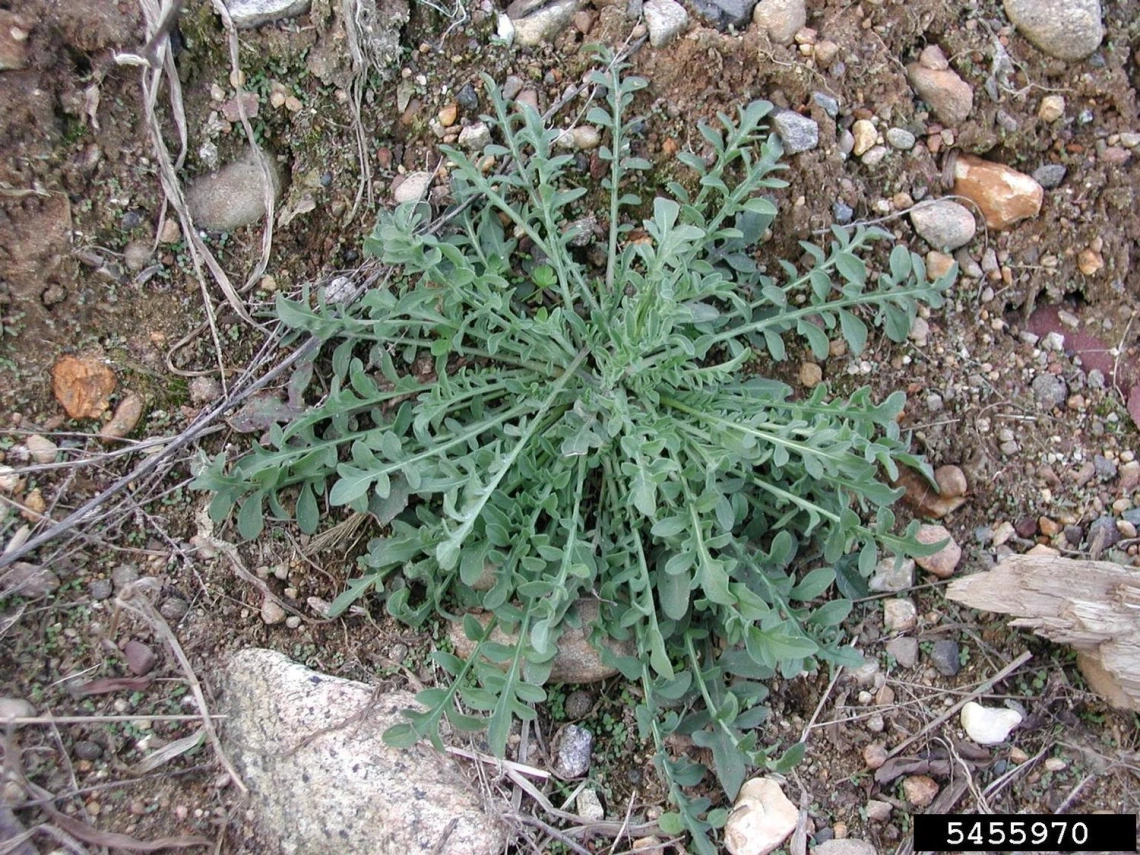Image
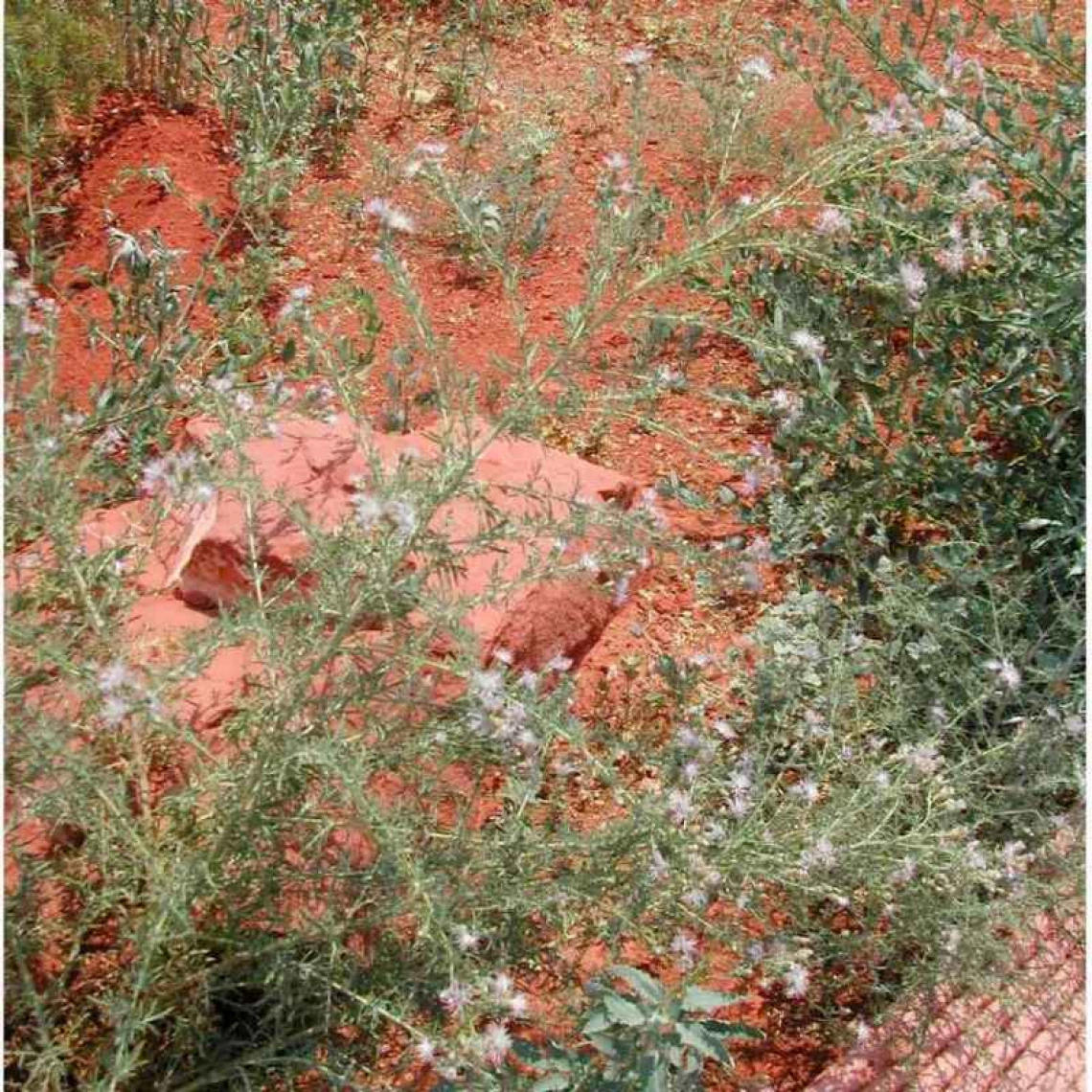
Spotted knapweed habit
Max Licher, swbiodiversity.org/seinet
Common Name(s)
Spotted knapweed
Scientific Name
Centaurea stoebe
Family
Sunflower or Aster family (Asteraceae)
Reasons for concern
This plant is a prolific seed producer. It can quickly take over both disturbed and managed areas, outcompeting native species and reducing plant diversity and wildlife habitat. It also contains allelopathic (toxic) chemicals that suppress the growth of nearby native vegetation. It is not as common a problem in Flagstaff and Northern Arizona as diffuse knapweed but whenever it is located it should be eradicated immediately to prevent spreading.
Classification
Non-native. Class A Noxious Weed on the Arizona Noxious Weed List, meaning that it is a “high priority pest for quarantine, control, or mitigation.”
Botanical description
Extremely competitive, tall, branching herbaceous plant.
Leaves
Rosette leaves deeply lobed, coarse, emerging from central point above taproot. Pale greenish-gray. Leaf 1 to 3 inches long, decreasing in size toward tip of stem.
Stem(s)
Stems slender, erect to 4 feet, sparsely to densely hairy. Alternate along the stem. Majority of branching on upper half of plant.
Flowers
Blooms from June to October. Flower heads usually remain on mature plant. Pink to purple, or rarely white, solitary flowers above bracts (modified leaves). Bracts have black edges which look like spots at tip, hence the name. 25 to 30 flowers per head.
Seeds
Large plant can produce up to 25,000 seeds. Up to 90% of seeds are viable at time of dispersal and remain viable for 5 to 8 years.
Roots
Very stout and deep taproot that can find moisture deep in soil. Native to: Eurasia
Where it grows
Likes sun or partial shade. Waste areas, dry meadows, pastures. Does not compete well with vigorously growing grasses in moist areas. Elevations 1,900 to 10,000 feet.
Lifecycle
Biennial or short-lived perennial
Reproduction
By seed
Weedy Characteristics
The deep taproot of Spotted knapweed can access moisture deep in the soil. It can regrow from the base when cut. It is highly competitive and aggressive, and forms dense colonies. Allelopathic (toxic) chemicals cause it to choke out native vegetation. Seeds are prolific and hardy and are readily dispersed by people and vehicles.
Look-alike Plants
Spotted knapweed can be confused with diffuse and Russian knapweeds, both of which need to be eradicated.
Image
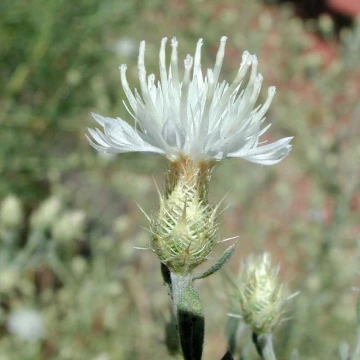
Spiny bracts on diffuse knapweed
Max Licher, swbiodiversity.org/seinet
Image
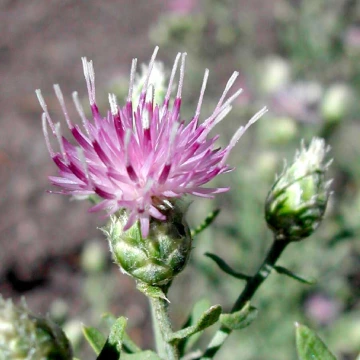
Russian knapweed flower heads
Max Licher, swbiodiversity.org/seinet
Control Strategies
Removing the entire plant before they go to seed can help with small populations. Always wear gloves when handling as it is thought that Spotted knapweed may contain a cancer-causing substance. Try to get as much of the roots as possible. Step down any loose soil. Frequently monitor previous infestations for new growth. Because seeds are long lived in the soil, pre-emergent herbicides can reduce new populations. If the infestation is dense, contact a professional as repeated use of herbicides may be required. Contact your local county extension office for more information on chemical control.
References
- Managing Spotted Knapweed Graham, J. and Johnson, W. 2004, University of Nevada Cooperative Extension
- Spotted Knapweed Noxious Weed Control Board, Washington State
- Spotted Knapweed Plant Conservation Alliance’s Alien Plant Working Group


